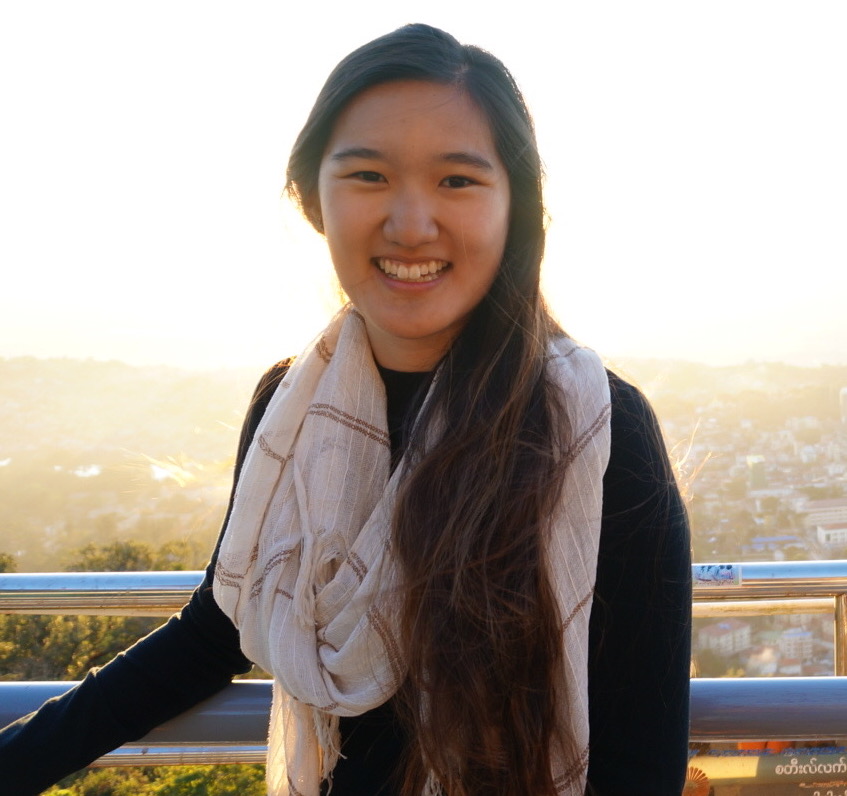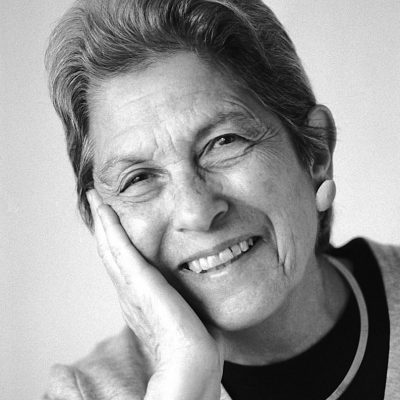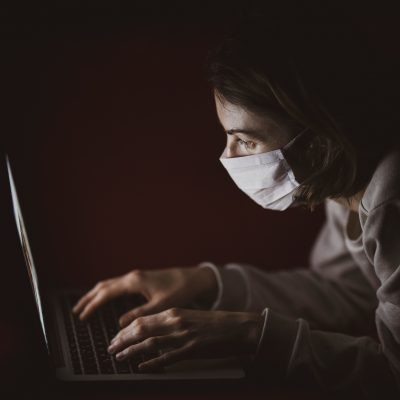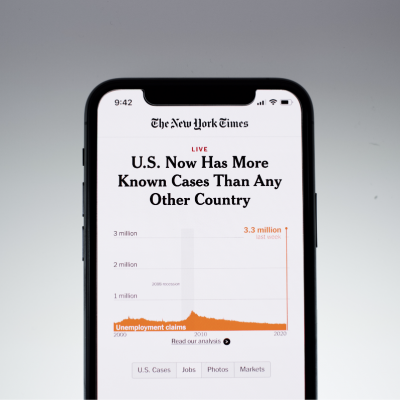Details
Article
To put it simply, the COVID-19 pandemic has brought yellow peril back in full force.
In eighth grade, I first learned about “yellow peril”—the belief that East Asians (particularly of Chinese descent) posed an inherent threat to white Western power, values, social order, and culture—and its consequences. I remember how deeply unsettling it was to learn about the extent of anti-Chinese sentiment, ranging from legislation to violent interpersonal attacks, throughout American history. However, my teacher framed yellow peril as just that: history. So while I was affected by the case studies we read, I was able to compartmentalize them as distant, in the past, and far removed from my own day-to-day reality.
Like many Asian Americans, I have lived my life being labeled based on my phenotypic features: Asian, Chinese, Hyphenated American, Perpetual Foreigner, “Other.” The list goes on. And, like many individuals who belong to minoritized or marginalized groups, I understand the consequence of these labels.
That perspective was, of course, naive. After all, I am Asian American. A Chinese American adoptee to be specific. By age thirteen, I had already experienced countless incidents of racism and xenophobia. But most were verbal: microaggressions revolving around model minority and fresh off the boat stereotypes or invasive questions relating to my transracial transnational adoption. Yet my childhood was also extremely sheltered; I was raised by a white Jewish family in a predominantly white, wealthy suburb of New York City, far removed from the realities many Asian American families and recent immigrants face. Despite feeling that those around me never quite understood my identity or accepted my place within the community completely, I never feared for my physical safety.
Over the past several months, though, this has changed dramatically. COVID-19 has pervaded every aspect of “normal” life. That includes racial relations.
Like many Asian Americans, I have lived my life being labeled based on my phenotypic features: Asian, Chinese, Hyphenated American, Perpetual Foreigner, “Other.” The list goes on. And, like many individuals who belong to minoritized or marginalized groups, I understand the consequence of these labels.
At a micro or interpersonal level, labels can make an individual feel self-conscious, stigmatized, tokenized, silenced, or even excluded from certain spaces. At a macro level, labels can be catastrophic.
In 2015, the World Health Organization (WHO) created a set of guidelines that prohibited new infectious diseases from being labeled—among other things—based on geographic locations, individuals, cultures, or ethnic populations in their official names. This followed an outcry after Ebola earned its name after a river and MERS after a geopolitical region since initial cases were traced to those areas.
In 2015, the World Health Organization (WHO) created a set of guidelines that prohibited new infectious diseases from being labeled—among other things—based on geographic locations, individuals, cultures, or ethnic populations in their official names. This followed an outcry after Ebola earned its name after a river and MERS after a geopolitical region since initial cases were traced to those areas. The WHO’s aim was to avoid unintended consequences or negative sentiments directed towards specific groups of people, as seen throughout history. Despite this, mainstream media outlets have frequently referred to the novel COVID-19 coronavirus as the “Wuhan Coronavirus.” President Trump has called it the “Chinese Virus” multiple times; one photographer even captured “corona” crossed out and replaced with “Chinese” on an official speech transcript. He subsequently defended his word choice as “being accurate.” Other reports allege a senior official from the Trump administration referred to the virus as Kung Flu, a hashtag that subsequently was tweeted hundreds of thousands of times. Trump Jr. also posted a Kung Flu Kid meme on Instagram.
In the 1800s, at the height of “yellow peril,” white Americans believed Chinese immigrants would invade and overtake the country. Chinese culture was equated to savagery. In newspapers, Chinese men were depicted as dirty and compared to monkeys; white America believed the only way to protect the United States was to keep Chinese individuals out.
These labelings have had detrimental, tangible effects. Around the world, people are targeting Chinese nationals and individuals of Asian descent (regardless of their origin country), attacking them verbally and physically. In Australia, an elderly Asian man collapsed and no one helped him for fear he was infected. He died at the scene.
In the United States, Asian Americans have been continuously denied services and people have begun avoiding Chinese American owned businesses en masse since late January. Around the world, Asian pedestrians have been assaulted. Last month after a stabbing in Montreal, the Korean consulate issued official safety warnings to Koreans civilians in the city. On Sunday evening, an Asian American was severely burned in a chemical attack in Brooklyn while taking out her trash. These represent only a fraction of reported hate crimes.
In the 1800s, at the height of “yellow peril,” white Americans believed Chinese immigrants would invade and overtake the country. Chinese culture was equated to savagery. In newspapers, Chinese men were depicted as dirty and compared to monkeys; white America believed the only way to protect the United States was to keep Chinese individuals out. Today, the slurs yelled, the graffiti phrases spray painted, and the social media vitriol posted echo the arguments of the late Nineteenth and early Twentieth centuries. Once again, Asians are being labeled as filthy, compared to animals, and told to “go back to where they came from.”
Today, the slurs yelled, the graffiti phrases spray painted, and the social media vitriol posted echo the arguments of the late Nineteenth and early Twentieth centuries. Once again, Asians are being labeled as filthy, compared to animals, and told to “go back to where they came from.”
The increase in coronavirus-related anti-Asian incidents has risen so quickly and steeply that the Asian Pacific Policy and Planning Council partnered with Chinese for Affirmative Action last month to launch an online reporting center for victims of discrimination. The platform logs approximately 100 hate crimes per day, with women three times likelier to report an incident. NetShark, a global platform for Asian news that has been documenting alleged hate crimes against Asians for years, has never before had so many submissions. Two weeks ago, New York State’s attorney general Letitia James also unveiled a hotline for New Yorkers to report incidents of anti-Asian discrimination and learn about support resources. Despite these trends, New York Post writer Rich Lowry has defended the Wuhan Virus title because “[the Chinese] government tried to suppress warnings about the new coronavirus and looked the other way, [so therefore] it deserves to be connected to the virus it did more than its share to let loose on the world — no matter what its foreign ministry or the sensitivity police say.”
COVID-19 has unveiled the reality that “yellow peril” is not a matter of the past as my history teacher once suggested. Individuals and governments alike have utilized this pandemic as an excuse to label Asians—especially those of Chinese origin—as dangerous, threatening, and incompatible with a safe, healthy, and orderly society.
It is indefensible to justify heinous anti-Asian crimes as unintentional byproducts of the Chinese government’s botched response or as necessary firm foreign policy measures. I believe leaders, the media, etc. know exactly what they are doing when they deliberately label the virus as Chinese: they are actively looking to divide, scapegoat, and dehumanize entire portions of society during an already tumultuous time. They are intentionally conflating the Chinese government with Asian civilians and Asian culture, thereby insinuating that anyone who seems to be of Asian descent deserves equal blame.
In short, “yellow peril” has been revitalized. COVID-19 has unveiled the reality that “yellow peril” is not a matter of the past as my history teacher once suggested. Individuals and governments alike have utilized this pandemic as an excuse to label Asians—especially those of Chinese origin—as dangerous, threatening, and incompatible with a safe, healthy, and orderly society. For the first time in my life, I constantly fear for my physical safety because I, like countless others, have been victim to an array of injustices—from being denied service to being verbally assaulted, outcast and avoided in public spaces—solely for being Asian. It’s a feeling I have felt before as a young woman, a Jewish individual, and a solo traveler in various contexts. But never before have I felt it solely because of my race.
For the first time in my life, I constantly fear for my physical safety because I, like countless others, have been victim to an array of injustices—from being denied service to being verbally assaulted, outcast and avoided in public spaces—solely for being Asian. It’s a feeling I have felt before as a young woman, a Jewish individual, and a solo traveler in various contexts. But never before have I felt it solely because of my race.
I recognize the racial privileges I have had as someone of East Asian descent up to this point in my life compared to other communities of color in the United States. Still, it is worth noting that many of the documented hate crimes against Asians over the last few months have been committed by individuals who are people of color themselves. It is a reminder how white supremacy and the model minority narratives in mainstream culture often push and divide people of color. It raises the shameful fact that throughout history, members of the Asian American community have actively or implicitly distanced themselves from other oppressed groups. I hope that, if nothing else, this moment of history opens a candid and critical discussion about anti-Asian racism and xenophobia within other communities. At the same time, I hope Asian Americans will walk away from this pandemic with deeper compassion and stronger allyship toward other marginalized groups who have lived with this fear for their physical safety their entire lives.
I hope that when we look back on this unprecedented time, the pandemic is defined by these acts of kindness, empathy, collective cooperation, innovation, and scientific achievement. And yet, I fear that instead, for so many Asian Americans, this time will evoke memories of “yellow peril” in its ugliest forms.
I understand that this pandemic is terrifying. Collectively, we feel that our lives and the world are out of our control, and we all cope differently. We all have varying degrees of safety nets and backup plans in place. Around the world, we are given glimpses of hope. We consume heartwarming moments because they sustain us. We are recognizing how important and irreplaceable healthcare professionals and other essential workers are to our economy, our lifestyles, and our mental and physical wellbeing. Workers who have been on the frontlines for years, from hospital cleaning crews to waste management workers, are finally visible heroes. I hope that when we look back on this unprecedented time, the pandemic is defined by these acts of kindness, empathy, collective cooperation, innovation, and scientific achievement. And yet, I fear that instead, for so many Asian Americans, this time will evoke memories of “yellow peril” in its ugliest forms.
I send love and solidarity to all those confronting anti-Asian discrimination and remind the world that Asians are not a virus.
Hannah Joy Sachs is a Humanity in Action Senior Fellow (2018 Berlin Fellowship). She is an experiential educator who facilitates learning programs for high school and college students throughout East and Southeast Asia. She is also a proud and active member of the Chinese American adoptee community.





